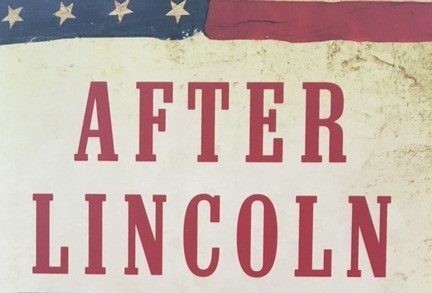Bookshelves groan under the weight of the accumulated Civil War canon. One area, however, receives scant attention in comparison to the battles and leaders of the War – Reconstruction and the entire post-war saga. A. J. Langguth’s After Lincoln: How the North Won the Civil War and Lost the Peace is a welcome addition to the period following the Civil War. Those who avoid the Reconstruction era in their reading because they find it lacking the excitement and drama of the military narrative of 1862 to 1865 will find After Lincoln a compelling story populated by a parade of intriguing characters and events.
There is the South Carolina U.S. House of Representatives member who beats a Massachusetts Senator senseless on the Senate floor after confronting him: “I feel it my duty to tell you that you have libeled my State and slandered a relative … and I am come to punish you for it.”
The Union general, a West Point graduate, who lost his left arm in fighting outside Richmond and is criticized for his lack of aggressiveness at Gettysburg. After the conclusion of the War, he promoted African-American higher education and was the first president of Howard University in Washington, DC, a school dedicated to preparing students – both black and white – for careers in medicine, law, and theology.
The former Confederate general who, in a farewell address to his troops, acknowledged the“feelings of animosity, hatred and revenge,” and then added, “It is our duty to divest ourselves of all such feelings.” This general later became a “Grand Wizard” in the newly-formed Ku Klux Klan. (Albeit “skittish about his membership” according to author Langguth.)
Prominent post-war players are also highlighted, such as Andrew Johnson, Thaddeus Stevens and Ulysses S. Grant. The author’s concise writing style delivers crisp, clear portraits of these major figures.
The author also offers readers an excellent summary of the “Jim Crow” era – its derivation and meaning, where it permeated social and legal history and then lingered until the mid-twentieth century in the United States.
Langguth has given us a highly readable, compelling view of the dark period of Reconstruction. A view populated with a mix of admirable men and a “rogue’s gallery of grudge and self-interest.” It is a fascinating perspective written by a skilled author and well worth a reader’s time.

Recent Comments